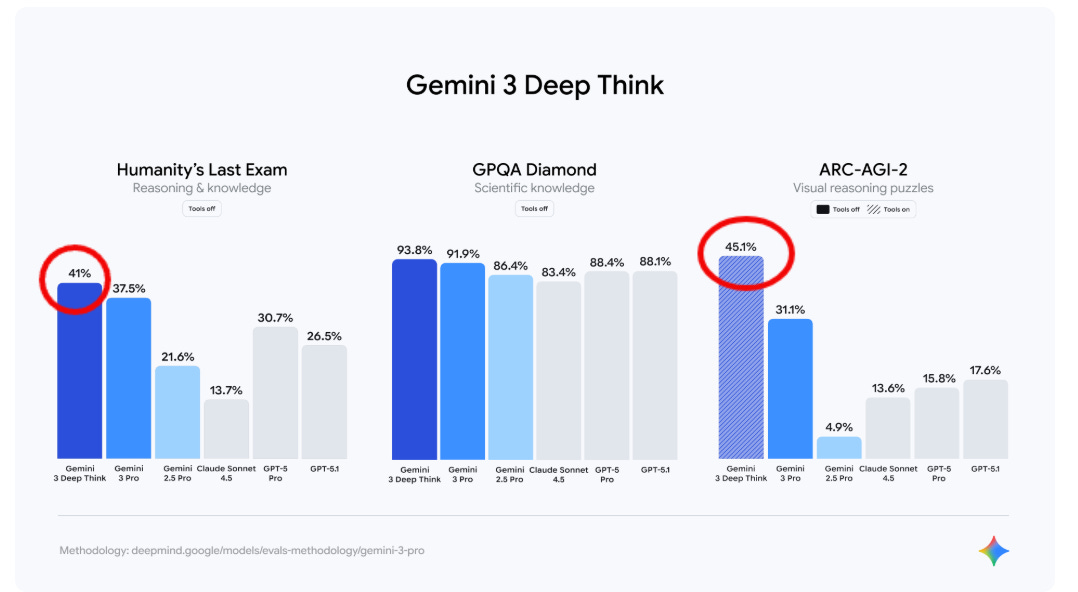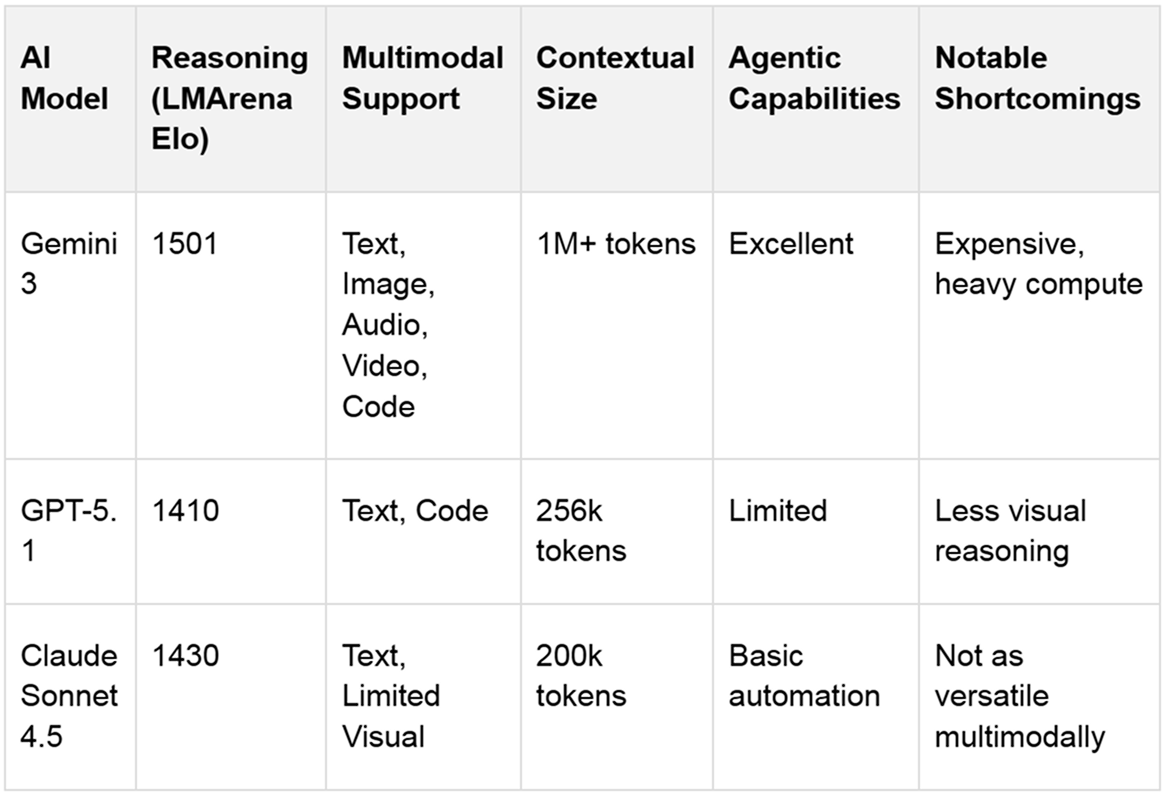

Eshal Minhaz
November 21, 2025
As part of Learnia.ai’s ongoing exploration of emerging AI technologies, I spent extensive time reviewing Google’s Gemini 3. As a company driven by innovation in AI research, development, and education, we prioritize firsthand experience with groundbreaking tools to inform our own strategy and educational initiatives—and to better inspire the next generation of AI creators and thinkers.
Gemini 3 by Google is the latest milestone in large language models, building upon the strengths of its predecessors while introducing a suite of advanced features in reasoning, multimodality, and agentic capabilities. This article reviews Gemini 3’s performance, real-world application, strengths, and new advancements.
Gemini 3 stands out for its state-of-the-art reasoning ability, scoring highest on major AI leaderboards such as:
Additionally, it sets new standards in mathematical reasoning and factual accuracy, outperforming leading models like GPT-5.1 and Claude Sonnet 4.5, while handling text, image, video, audio, and code within a unified transformer architecture.
Gemini 3 represents a new standard for large language models, offering significant improvements in reasoning, multimodal integration, and workflow autonomy.

We compared Gemini 3’s performance to other leading language models based on recent published benchmarks: The comparison table highlights the distinct strengths and limitations of leading AI models, making it easier to identify which solution fits specific needs and use cases.

Gemini 3 stands out for its:
This enables it to handle complex, cross-domain tasks with remarkable reliability. Compared to models like GPT-5.1 and Claude Sonnet 4.5, Gemini 3 offers more advanced agentic capabilities, allowing it to plan and execute multi-step processes automatically.

Gemini 3’s one-million-token context window allows it to synthesize information from vast and varied sources, supporting truly multimodal reasoning.
The Deep Think mode further enhances its performance on advanced challenges, achieving:
This demonstrates prowess in strategic planning and creative problem-solving. Its video and chart interpretation skills mean it can explain scientific concepts in dynamic formats—making it particularly useful for educators, researchers, and professionals in content-heavy tasks.
A hallmark of Gemini 3 is its practical agentic capabilities, such as autonomously planning and executing complex, multi-step software tasks.
Gemini 3 brings ideas to life—from building landing pages and pitch decks to coding fully interactive web apps in seconds.
Its reliability in long-horizon planning, as tested on Vending-Bench 2, shows it can consistently execute workflows and decision-making processes over extended periods—beneficial for business automation and advanced productivity.
Despite its strengths, Gemini 3 has considerations that decision-makers should weigh:
Gemini 3 is a major leap for the AI field and a highly capable tool for enterprises and technical teams requiring deep, context-aware automation and content creation.
Its advancements in multimodal understanding, agentic task handling, and reliability make it ideal for tackling complex, high-volume, or research-intensive workflows.
However, prospective adopters should weigh premium pricing, hardware demands, and the value of Deep Think enhancements relative to their organizational needs and scale.
For companies pushing the envelope of digital transformation and automation, Gemini 3 stands out as a leading strategic investment. For more casual use or smaller teams, it may exceed practical needs or budget.
As AI continues to evolve, Gemini 3 sets a benchmark for what’s possible—while also making transparent the areas where further progress is needed.